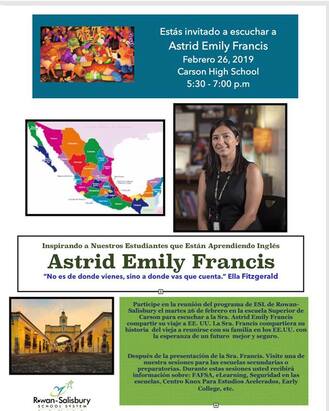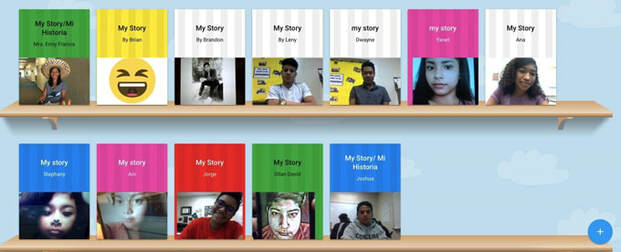|
I was honored to attend a wonderful family event night organized by the English as a Second Language of Rowan-Salisbury, North Carolina. This meeting had ELs and their families at heart. Not only they allowed me to share my immigrant story and EL experience to the audience in Spanish, but also they had several workshops available for parents.
I loved taking questions and answering concern parents have in regards to second language learning; using native language at home; the law that protects ESL students; how school system works in the USA, etc. I can tell that a lot of parents felt a connection to my story and I hope that my story stays with them forever!
0 Comments
Personal experiences are powerful. My journey as a first-generation immigrant and a former English learner is now central to what I do. My personal experiences, coupled with my responsibilities as an educator, have helped me to embrace the role of an advocate and to create and establish a sense of culture that values students’ greatest gifts: identity and individuality.
When ILA launched Children’s Rights to Read campaign last fall, I immediately saw connections to my teaching philosophy and the role I can play in advocating for those rights. Children’s Rights to Read—10 fundamental rights ILA asserts every child deserves—is a campaign in which ILA aims to activate educators around the world to ensure every child, everywhere, receives access to the education, opportunities, and resources needed to read. As a high school teacher of English as a second language (ESL), my job is to analyze my students’ needs and to develop their linguistic and communicative competence in English in all language domains. However, my goal as an educator is to create meaningful learning experiences that serve as pathways for connection. I can create those experiences through the framework of Children’s Rights to Read |
Categories
All
Archives
May 2024
|

